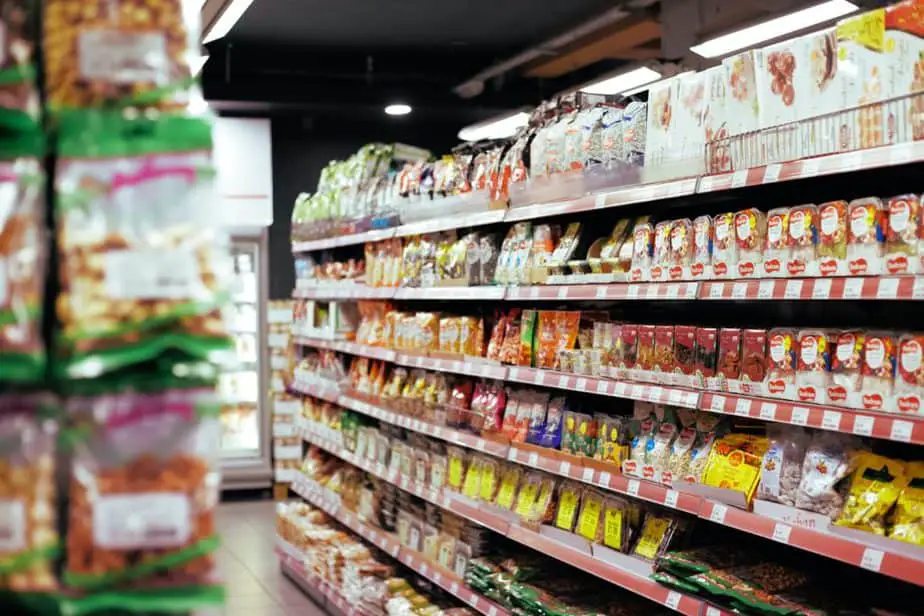Have you ever wondered what really happens to the stocks of products that you see on the shelves of your supermarket if they go unsold? From your favorite dress to groceries for daily use, from that favorite hand bag of yours to the accessories for home decor, where does that all go? Also, What happens to the “Unsold” food in the supermarkets?

Let’s explore the answer to this query.
Different unsold products in the supermarket meet different fates if no one chooses to buy them. Few are taken away or thrown out, few given out for free, few are donated and few of them are reused or recycled. What happens is determined by the motive behind the action of dealing with the respective products. This goal can be as harmless as minimizing the wastage or sustaining the resources or as complicated as securing the brand image and maintaining the patent “uprightness”. The nature and shelf life of the product also influences the further course of action.
Let us look at some of them and trace the journey of a few products with different nature once they are taken off the shelf.
nsolWhat happens to the “Unsold” food in the supermarkets?
The biodegradable material including fruits and vegetables, groceries, meat and dairy products are removed and are either distributed or thrown away. Because of the shorter shelf life, it is important to get away with such products as soon as possible. If available in edible condition, the stock is often distributed among the employees to take that away. If not, It is dumped to degrade and tarnish, which can further be used for generating compost or organic manure.
Before it spoils, fresh vegetables and meat are sometimes cooked for in-store deli or salad counters, or it finds place in the food banks or salvage stores where it reaches to the ones who need it and can use it.
Some figures to look up to
To much of our surprise, the US deals with an alarming amount of expired food items and groceries and the onus to deal with the treatment and handling follows along with the wastage.
One should be cognizant of the fact that about half of these products going down the line in sheer wastage are either edible or accessible to use. This wastage can be attributed to selective buying and people giving preference to certain products over others. It also happens that the supermarkets tend to replace what’s on the shelf if it is no more appealing to the consumers and is not affecting the sales in any positive manner.
The so-called “ugly” products are replaced by more desirable items that will be readily taken up by the customers. The irony lies in the fact that food banks of the country have observed an increase in the demand of the food donated approximately by 40% (source: Food Trust) at the same time. Therefore, in a way we can infer that the donated food has become a significant part of the diet for many people residing in the country.
Why they do not donate these edibles and grocery products?
The reason why most of the supermarket stores are adamant to donate these products is that they are unsure about the quality; if it is any fit for use if it exceeds its shelf time. Although there are no lawful regulations on such donations and how the stock will be further taken care of, there is a genuine worry if their act of “kindness” can place them in some legal difficulties if that donated lot leads to any repercussions for the ones who consume that. Apart from that, the stores find it more convenient to get away with the stock by dumping it rather than sending it and taking the accountability for the donated products.
The manufacturers’ dilemma
The manufacturers and the companies are conscious about the quality they serve to their customers which is indeed proportional to the sales and the figures of profit they will make.
The aim is to essentially reuse or reproduce the products unsold, but for certain products that exceed the date of expiration have to essentially be thrown away which takes a toll on the environment if not disposed off properly and also leads to resultant wastage of resources. However, there is a room for question when it comes to what really happens on the ground for many of such manufacturers and leading corporations.
The dilemma is between sustainability, being cost and resource efficient, and the profits earned at the cost of exploitation. What supermarkets have in their hand is the amount of products they stock in, based on their target population they cater to and expected demands and sales.
Conclusion
It has been noticed that supermarkets often tend to “overstock” in order to offer choice among the varieties, which in most of the cases, is not even necessary. To desire for profit is not ideally wrong in any sense, but being mindful of the factors involved means no harm.
The fate of huge unsold supermarket lots is not the same and there is no fixed answer to what exactly will happen to what production. But the overall picture is indeed thought provoking that calls for introspection into the process and management of the market, production as well as personal share of responsibilities.


